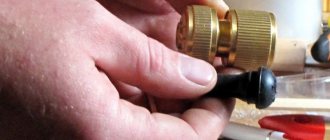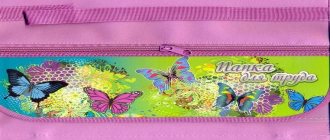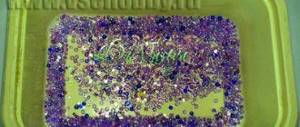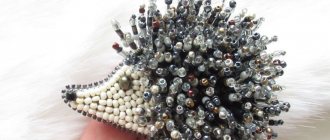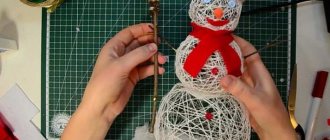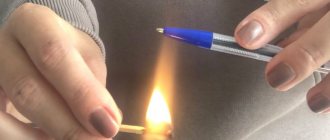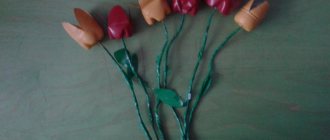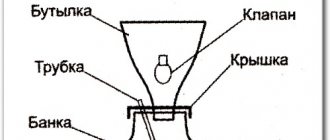Author: Vossen
December 29, 2014 08:23
Tags: copy homemade with your own hands
13325
20
Some car enthusiasts are categorically dissatisfied with cars produced by official manufacturers. And then they decide to create home-made cars that will fully satisfy all the individual wishes of the owner.
0
See all photos in the gallery
Features of assembling an all-wheel drive mini tractor
A design feature of all-wheel drive vehicles is a small turning radius, which is achieved by using a breakable frame. Drawings of a homemade 4x4 mini tractor are distributed by the authors through periodicals and are in the public domain.
Tools and materials
To make homemade equipment you will need a set of tools:
- welding machine;
- steel profile cutting tool;
- drilling machine;
- vice;
- measuring tool;
- a set of keys.
The list provided is a minimum. In the process of finalizing serial units, additional equipment and accessories may be required.
For self-assembly, you will need several components that can be borrowed from serial equipment with modifications:
- frame made of steel profile;
- engine;
- components and spare parts for suspension;
- transmission units;
- steering gear;
- various fasteners.
How to make a 4x4 tractor
To assemble a tractor, you will need to make your own frame, install the body and components on it, and then adjust the components. To manufacture parts, special equipment may be required that the owner does not have. In this case, parts are ordered from specialized workshops and are made based on sketches or drawings provided by the customer.
Frame and body
The four-wheel drive tractor frame consists of 1 or 2 sections made of steel profile. A channel or square pipe is used for the frame. The profile dimensions are determined by the type and power of the engine. The connection of the side members and reinforcing cross members is carried out by welding.
The design of the frame of 2 sections provides for a hinged connection of the parts. For this, a kingpin suspension unit or a universal joint from a truck can be used.
The tractor body is not exposed to loads, so it is made on the basis of a frame made of metal rods. Protective screens made of steel sheet or plastic are mounted on the frame.
Steering and seat
Miniature tractors use steering with mechanical and hydraulic operating principles. The mechanical drive is assembled on the basis of an automobile steering gear of a worm or rack and pinion design. Gearboxes are mounted on the frame side member directly or through adapter plates.
Using a hydraulic drive makes maneuvering easier, but the system requires a pump to operate.
Mini tractors use gear pumps from agricultural machinery, which are driven from the engine through an intermediate shaft. Direct belt drive is not recommended as it causes damage to the pump bearing units.
The operator's seat must be located at a sufficient distance from the steering column. Since homemade equipment is not equipped with suspension, it is recommended to use sprung seat supports from the tractor. In addition to reducing vibration, the supports allow you to adjust the seat height and distance from the pedals.
Engine
Air-cooled engines from stationary equipment, walk-behind tractors, motorcycles or small loaders can be used as a power unit. It is common to install a ZAZ air-cooled engine, which has a standard fan cooling system.
Liquid-cooled engines are not widely used in homemade devices. There are examples of equipment using a modified motor from a motorized stroller. The cylinder with air cooling fins is replaced with a unit from the tractor starting engine. The radiator is located in front or on the side of the engine. Liquid circulation occurs using a thermosiphon method. The engine retains an electric starter starting system. Additionally, a generator from a VAZ or AZLK car is installed.
The 4x4 transmission uses gearboxes from off-road vehicles combined with a transfer gearbox. It is possible to install separate units, but this option complicates the kinematic diagram and increases power losses. The connection between the engine and gearbox is made through an adapter plate, which allows the mounting points to be aligned.
The axles are driven by shafts with cardan joints. The shafts must have a splined connection, which allows you to adjust the installation of transmission units and ensure the operation of the drives when moving.
Wheels
Mini tractors use wheels and rims from cars and tractors. It is not recommended to use front wheels with a disc diameter of less than 12 inches, as they dig into the ground when driving. When operating a tractor in the field, off-road tires with developed lugs are used. The vehicle's cross-country ability can be increased by installing chains. The wheels are mounted on hubs with a suitable fixation radius of the mounting studs.
For stopping, band or drum brakes are used, installed together with the hubs. The brake drive is mechanical or hydraulic.
A tractor with a 4x4 breaking frame does not require the installation of steering knuckles, since the turn is carried out due to the movable connection of the frame sections. The car uses axles from cars with trimmed stockings and axle shafts. There are designs based on torsion bar suspensions borrowed from ZAZ cars.
When using steered front wheels, the axles are equipped with steering knuckles from all-wheel drive vehicles. The width of the bridge is reduced to the required value by trimming the stocking, to which the flange for attaching the rotating unit is welded. The bridge is then attached to the frame side members using stepladders. It is recommended to cover the bridge installation points with protective screens made of steel angle.
Since serial bridges have stockings of different lengths, replacing a long stocking with a short one can be used instead of trimming. Such a scheme has its advantages and disadvantages. The advantages of the design include the accuracy of the assembly, since there is no need to trim the axle shaft and overweld the flange. The negative side will be the resulting rut, which may be insufficient or excessive.
Homemade minimax station wagon
A homemade station wagon gives enormous moral satisfaction. And work done with your own hands, in my opinion, is the best break from your main activity.
Minimax car layout
When creating the Minimax (Fig. 1), I additionally solved the following problems: transition to a completely closed body; expansion of internal dimensions without much increase in external dimensions, simplification.
Rice. I. Layout of the Minimax microcar and suspension parts.
A - steering mechanism rocker: I - SZA rack rod, 2 - intermediate link, 3 - rocker threaded bushing, 4 - rocker, 5 - ball ends, 6 - steering rods:
B — body preparation: 1 — door sliding back, 2 — frame. 3 - windshield, 4 - spare wheel, 5 - steering mechanism, b - steering post and instrument panel, 7 - windshield, 8 - opening part of the roof (aviasent), 9 - rigid part of the roof, 10 - glazing of the rear part of the cabin, 11 - body edging (duralumin square), 12 - side panel, 13 - SZA engine and main gear, 14 - longitudinal frame spar: 15 - bottom of the cabin, 16 - door guide strip. 17 - door lock:
B — front suspension: 1 — trapezoid leg. 2 — gusset for fastening the front axle SZA, 3 — reinforced bracket for fastening the lower shock absorber arm, 4 — upper cup, 5 — spring, 6 — lower cup, 7 — lower ear of the shock absorber, 8 — figured bolt, 9 — reinforcing tube.
Design features
The flat frame (Fig. 2) is made of welded steel pipes of rectangular section 50X25 mm, with a wall thickness of 2.5 mm, forming a rectangle 3200X1500 mm, with four transverse crosspieces and two additional longitudinal elements. The frame is essentially the main assembly jig: all other components of the chassis and body are bolted to it.
Rice.
2. Frame design made of rectangular pipes. A - general view: 1 - longitudinal bars. 2 - crossbars. 3 — spar for fastening the bridge: B — pipe section .
Minimax has sliding doors. With a carriage body this is easier to do. In addition, this design allows them to be made much wider, without increasing the required parking dimensions, which is inevitable with swinging doors. And wide doors for a minicar with a carriage layout mean additional convenience for the driver and front passenger. In this sense, the Minimax has certain advantages compared, for example, with a Fiat carriage-type microcar, and a lighter power circuit; expansion of doorways; modernization of the steering mechanism.
Of course, along with great advantages, the carriage layout has its drawbacks (otherwise cars of this type would have already become more widespread). First of all, it should be noted that the driver is not in the “comfort zone”, near the center of gravity of the car. Therefore, it “swings” much more than in classical machines. If you make the suspension softer, this will lead to an increase in “galloping” - the longitudinal rocking of the car, which is generally characteristic of carriage layouts that have a small base and dispersed masses. This is especially noticeable when driving over rough terrain, which is why I had to slightly increase the stiffness of the front suspension.
The front position of the driver in a carriage-type car is also more dangerous in the event of a collision with an obstacle. Therefore, the Minimax has adopted the location of the spare wheel on the front panel of the body - it can, to a certain extent, work as a shock absorber. The key decision in order to increase safety was the choice of frame: in the form of a closed load-bearing frame extending beyond the dimensions of the body along the entire perimeter, located at a height of 400 mm from the road surface.
Passengers in the back seat enter the Minimax through the wide door; The cabin can easily accommodate a refrigerator or other large luggage. The dimensions of the rear hinged door also contribute to this.
The carriage layout imposes restrictions on the size of the wheels: after all, the driver’s seat is located above the front axle. In addition, increasing the machine's center of gravity negatively affects its stability. In addition, it is necessary to comply with existing technical requirements that limit the height: no more than 1450 mm.
The 5.00-10 tires of the SZA motorized stroller fully satisfy all the conditions, although they limit the total weight of the vehicle to the permissible load: 250 kg per wheel.
The use of these tires prompted the use of motorcycle axles - the front one was based on the SZA suspension, mounted on two longitudinal welded box-section cross-beams, mounted on the first two transverse crossbars of the frame. The required rigidity is achieved through additional spiral springs mounted on the shock absorbers. At the same time, the attachment point for the lower ear of the shock absorber has been strengthened. The preload of the springs is adjusted in the same way as recommended for the Zaporozhets.
The layout of the engine compartment provides for the possibility of installing the Zaporozhets ZAZ-965 power unit. However, the first version of the Minimax is equipped with a SZA power unit, with a slightly increased compression ratio (up to 7.8); at the same time, the rear part of the SZA frame with the engine, main gear and rear wheel suspension balancers is fully used.
I consider it my duty to warn followers that the use of the SZA (or SZD) chassis, even with the correct distribution of the load between the wheels, limits the running weight of the vehicle to a maximum value of 1000 kg. With the dry weight of the Minimax being 640 kg, the payload thus does not exceed 300 kg. Therefore, on a long tourist trip, taking into account travel items, only 2-3 people can travel in the car. The task of keeping the weight to 640 kg is not easy if there is no strict control over the weight of the parts during the creation of the machine. Indeed, often home-made products have a dry weight of about 800 kg (or even more), which leads to extremely rapid wear of rubber and suspension parts. For this reason, many home-made machines subsequently have to be almost rebuilt from scratch.
The steering, in addition to the components borrowed from the SZA, has a longitudinal rocker, the front end of which is connected by a rod to the steering rack. The steering linkage ball joints are attached to the rear end of the rocker.
Drum brakes are installed on all four wheels. The handbrake only applies to the rear wheels.
The body is assembled from several separate units. The frontal part consists of two lower longitudinal rectangular pipes 50X25 mm, to which racks are welded, and transverse steel profiles attached to them with bolts, sheathed at the bottom (floor of the front compartment) with 7 mm thick getinax, at the front with 4 mm textolite, at the back and on the sides with sheet metal steel 1 mm.
The front glazing frame is welded from bent corners 1.5 mm thick and 15X1.5 mm tubes (upper contour and middle pillar). The windshield is made up of two halves cut from triplex.
The sides are assembled with M5 bolts from aluminum profiles and 3.5 mm getinax sheets. They are connected by the middle bulkhead (between the passenger and engine compartments) and the rear side. The sides and middle bulkhead are attached to the frame, and the front edges of the sides are supported by racks made from the same 50X25 mm rectangular pipes. In the upper part, the edges of the sides at the front and back are connected to each other by arcs welded from 25X2.5 mm pipes.
The longitudinal contours of the roof are formed by aluminum profiles with a rectangular section of 40X20 mm and a protruding shelf, which serves as a drainage system and a guide for sliding doors. The profiles are fixed to the front glazing frame and to both arches.
The roof consists of two parts: the back, between the arches, made of sheet hetinax; the front one is soft, on a tubular frame, removable.
The side glazing is assembled in frames made of aluminum profiles. The doors are diamond-shaped and move on two upper rollers, each with a lower guide. When closed, the doors fit tightly into the front groove of the frontal part and overlap with the rear edge of the body. Free sliding of the doors is ensured by a special mechanism (see Fig. 1B). During the initial movement, the rear lower corner of the door slides in an oblique guide that moves the bottom of the door away from the body. The rear additional engine compartment door is suspended on two upper hinges.
The floor of the passenger compartment is made of 6 mm thick getinax sheet and fixed to the walls of 1 mm thick steel sheet between the middle cross members and the internal longitudinal elements of the frame.
The frames of the front seats are welded from steel tubes 20x1 mm, onto which rubber strips from the Zaporozhets seats are stretched and leatherette covers are put on. The rear seat and its backrest can be removed (when transporting cargo) or rearranged into the plane of the engine compartment lid, resulting in a common sleeping area measuring 1900XXI250 mm. At the same time, the front seats are not removable, and there is enough space for luggage in the lower part of the cabin.
The instrument panel is located on the steering column. The gear control is located next to the driver's seat. Rods and control cables run in the central tunnel below the frame level, and in the front and passenger compartments they are covered with covers.
The body, outside and inside, is lined with plastic that imitates wood.
Rice. 3. Diagram of the Minimax microcar in four projections and the main dimensions of the seats.
The shape of the machine was determined by the proportional composition of flat surfaces, most characteristic of wooden panels. At the same time, such planes are the most technologically advanced in relation to home production conditions. The lack of aerodynamics of the adopted shape plays practically no role, since in urban conditions the average (and even maximum) speed is low. From the point of view of technical aesthetics, it should be noted that attempts to fit the “panoramic” windshield of the Moskvich into the Minimax body on several models (on a scale of 1:10) showed that the car looks much better with flat glass. The design of the upper guides and the rhombic door contour also fits well with the chosen body shape. As a result, while the length of the car was shorter than that of the Zaporozhets, its internal volume was greater than that of the Volga.
As the experience of using the car in Moscow and on the roads of the Moscow region (mileage over 30 thousand km) has shown, the design of the car was basically successful. Winter operation also convincingly demonstrated the great advantages of the air-cooled two-stroke engine.
Due to the high weight ratio, even with a 350 cm3 engine, a car with two passengers has sufficient acceleration for driving in the Moscow “green wave”, and the maximum speed reaches 70 km/h. Low engine power is felt only on long climbs and when overtaking, or if two more passengers get into the car: throttle response drops noticeably. Therefore, if long tourist trips with the necessary luggage are expected, then it is advisable to install a more powerful engine.
P. Zak, Moscow
Choosing an engine for a homemade tractor
If you decide to assemble a mini tractor with your own hands, then first of all you need to select a power unit for it. The ZID engine is often used as the latter. This is a four-stroke unit with a volume of 0.52 liters. and a power of 4.5 l/s, which is quite suitable for cultivating 2-3 hectares of land. The engine is easy to maintain, so it is often installed on various home-made equipment; moreover, it is easy to buy on the Internet.
Another option for homemade products is the UD-25 engine. This is a two-cylinder unit with a power of about 12 l/s and a volume of 0.42 l. Although this type of motor has long been discontinued, there are a large number of offers on the Internet for the sale of this unit. It can be bought for approximately 5,000 – 8,000 rubles.
Often, when making homemade tractors, craftsmen use motors from cars. For example, you can find mini tractors with an Oka engine.
This engine has a power of 29.3 l/s and a volume of 0.649 l. In fact, this is a VAZ engine (VAZ 21083), only in a lightweight version, since it weighs 2 times less. A distinctive feature of the Oka engine is its low gasoline consumption and high efficiency.
A more expensive option is a Zhiguli engine. The engines of the VAZ car line have an engine power of 59 l/s (VAZ 2101) and higher. A tractor with a VAZ engine is a fairly powerful unit that can cope with almost any agricultural work.
It is easiest for owners of walk-behind tractors to make a mini tractor for the household, since this unit already has all the necessary control units. All that remains is to make a suitable frame, and the tractor is ready.
Homemade car for Formula 1 racing
0
0
A real Formula 1 racing car costs a lot of money - more than a million dollars. So there are no such cars in private ownership. At least their official versions. But craftsmen from all over the world create replicas of racing cars with their own hands. One such enthusiast is Bosnian engineer Miso Kuzmanovic, who spent 25 thousand euros to create a street car in the style of Formula 1. The result is an incredibly beautiful car with 150 horsepower that can accelerate to speeds of 250 kilometers per hour. Driving this red car through the streets of his city, Kuzmanovic earned the nickname “Bosnian Schumacher.”
What to make a frame from
Assembling a mini tractor always begins with making the frame. The frame of the mini tractor acts as a base on which all components and parts of this unit are fixed. The frame should be strong enough and at the same time not very heavy. It is usually made from a metal angle, a profile pipe or a channel. The parts are connected by welding. The frame can be solid or consist of two parts.
A solid frame is the easiest to make. It is enough to weld a rectangle from a channel or corner. Frame dimensions are calculated based on the dimensions of the engine, gearbox and other components.
Also among owners of personal plots, 4x4 mini tractors are very popular. These are all-wheel drive mini tractors with a breakable frame. The word “all-wheel drive” means that the unit has both drive axles, front and rear. An example of such a frame, made from channel No. 10, is shown in the following photo.
The frame fracture unit is most often made from the driveshaft of a car, for example, from a GAZ-52.
The main advantage of a homemade tractor with a breakable frame is the small turning radius of the unit. Thanks to its high maneuverability, the fracture minitractor is successfully used in small areas where turning a minitractor with a solid frame would be difficult.
Below are drawings of a frame connected by a hinge.
What to make a chassis from
To assemble a mini tractor, you need to prepare its chassis. It includes wheels, front and rear axles, and transmission elements.
When choosing wheels for a mini tractor, you should take into account the purpose of using the latter. If the unit is being built for transporting and pulling loads, then a disc diameter of 16 inches will be sufficient. When using a tractor in field conditions, it is better to use more massive wheels with discs with a diameter of 18 to 24 inches.
If the drive axle in your tractor is only the rear one, then the front beam is made quite simply.
- It is necessary to prepare 2 steering knuckles from a VAZ Classic car.
- A piece of the required length is cut from a profile pipe (40x40 mm square). The width of the track will depend on the length of this beam.
- Next, racks of 35x35 mm corners are welded to this pipe. The steering knuckles will be attached to them. There is no need to disconnect the steering bipod - it will be useful when installing the steering mechanism.
- Brackets are welded to the corners into which ball joints are installed.
- The front beam of the mini tractor also has a swinging mechanism in the center. In this case, it, together with the cross, was removed from a UAZ vehicle.
To make a homemade front axle, as well as its rear analogue for an all-wheel drive unit, you will need to take 2 identical chassis units, for example, from a VAZ or Moskvich car, and shorten them. You can learn how to shorten the bridge from a VAZ car from this video.
Important! Axles must have the same gearboxes, with the same gear ratio. Otherwise, the front and rear wheels will rotate at different speeds when the tractor moves.
Since the bridges already have a built-in mechanism for transmitting rotational motion to the wheel axle, there is no need to make a homemade gearbox.
Homemade Batmobile from Shanghai
0
0
Fans of Batman films around the world dream of the Batmobile, a stunningly designed superhero car that has many different features that are not available in ordinary production cars. And engineer Li Weilei from Shanghai decided to realize this dream with his own hands. He created a real Batmobile that looks like it came straight out of movie theaters. At the same time, the Chinese spent less than 10 thousand dollars on the construction of this machine. The Shanghai Batmobile, of course, does not have ten different types of weapons and does not drive at a speed of 500 kilometers per hour, but in appearance it exactly replicates the Batman car shown in the latest films about this hero.
Pros of installing hydraulics
Hydraulics are installed on a minitractor in order to ensure the operation of some of its mechanisms and facilitate the control of this unit. A unit with installed hydraulics has its advantages.
- The car becomes easy to control. The steering wheel can be turned with virtually no effort, with one hand.
- Hydraulics makes it possible to use various attachments.
- The use of hydraulics allows you to modernize the brake system. Thanks to the hydraulic cylinders installed on the unit, the unit brakes instantly.
You can make hydraulics on a mini tractor if you purchase a ready-made system in advance in a store or use parts from old agricultural machinery.
Important! When installing hydraulics on a mini tractor, it should be taken into account that some of the engine power will be spent on servicing this unit. Therefore, for tractors with low-power engines, installing hydraulics will not bring any benefit.
Manufacturing a three-point hitch
The hitch is used to connect additional equipment, such as a plow, to the tractor.
The hitch must be movable both in the horizontal and vertical planes . In the first case, mobility helps to reduce the overhang of the nozzle when taxiing. Vertical movement of the suspension is required to lower the equipment into a working position or raise it into a transport position.
The hitch on a mini tractor is made from various parts removed from old agricultural machinery. It is quite difficult to describe how to make a three-point hitch at home. Therefore, it would be more correct to use the following video, which shows the dimensions of all parts of the device.
Selection and installation of brakes and clutch
Brakes must be installed on the rear wheelset. The easiest way is to take ready-made blocks from a UAZ car. The brake pads must be installed on the wheel disks, and the control must be placed on a pedal or lever installed inside the cabin.
To install a clutch on a homemade mini tractor, you can also use a ready-made version from a car. For example, you can use a belt clutch from a Moskvich or UAZ.
The clutch unit is attached to the gearbox, also taken from a car. You can see how the clutch is installed in this video.
Homemade Rolls Royce Phantom from Kazakhstan
0
0
A separate area of creating homemade cars is the construction of cheap copies of expensive and famous cars. For example, 24-year-old Kazakh engineer Ruslan Mukanov built a visual copy of the legendary Rolls Royce Phantom limousine. While prices for a real Rolls Royce Phantom start at half a million euros, Mukanov managed to build himself a car for just three thousand. Moreover, his car is visually almost indistinguishable from the original car. True, this car looks very unusual on the streets of provincial Kazakh Shakhtinsk.
Steering installation
Making a steering mechanism yourself is quite difficult, and in principle there is no point, since all the parts can be taken from any passenger car.
The following is a diagram that shows how the standard steering control installed on most self-propelled vehicles works.
When installing the steering mechanism, the steering shaft with gear is connected to the steering bipods, which are located on the steering knuckles mounted on the front beam (the manufacture of the beam was discussed above).
How to make a cabin for a mini tractor
If in the summer you can work on a mini tractor without a cab, then with the onset of the autumn-winter period, using the unit becomes quite uncomfortable or even impossible. Therefore, craftsmen are trying to assemble tractors with cabins in order to use this equipment all year round.
The cabin for homemade equipment is made of sheet steel according to a pre-prepared drawing. You can take the cabin from the MTZ tractor as the basis for the calculations. The following photo shows a drawing, based on which you can make a cabin yourself.
The cabin is manufactured as follows.
- First of all, you need to assemble a frame from wooden blocks according to the dimensions of the drawing.
- Next, a metal profile pipe is cut to the size of the wooden frame parts. All parts are connected by welding.
- The welded structure is placed with the roof on the ground and glass holders are welded inside the cabin.
- The roof is made of 1 mm sheet steel. The fragment can be cut out with a grinder and welded to the top of the cabin.
- The floor and side parts of the cabin are made of 2 mm thick sheet steel.
- The door frame is also welded from a profile pipe. To automatically close the doors, gas elevators can be installed on the frame.
- After installing the glass, the inside of the cabin can be lined with foam rubber and covered with leatherette.
- The cabin is installed on the frame, in a place prepared in advance for it.
In general, to better understand how to make a mini tractor with your own hands, you can watch this video, a kind of guide for beginners.
Super Awesome Micro Project - a homemade pneumatic car made from LEGO
0
0
The LEGO constructor is such a versatile material that you can even construct a fully functional car from it. At least this was achieved by two enthusiasts from Australia and Romania, who established an initiative called the Super Awesome Micro Project. As part of this, they built a car from a LEGO set that can move thanks to a 256-piston pneumatic engine, accelerating to a speed of 28 kilometers per hour. The cost of creating this car was just over 1 thousand dollars, of which most of the money went to purchase more than half a million LEGO parts.
The nuances of making a caterpillar tractor
Homemade tracked mini tractors are a technique whose main feature is high maneuverability and good cross-country ability. Also, a tractor on tracks creates minimal pressure on the soil, which cannot be said about its wheeled counterpart.
To make a mini tractor on caterpillar tracks, you will need the following structural elements.
- Frame. It is made from a profile pipe or channel.
- Engine. For a caterpillar mini tractor, it is better to use a diesel engine.
- Main bridge. As in the manufacture of a wheeled tractor, for a tracked unit you can also use a ready-made axle from an old car, which should be shortened.
- Transmission. The ideal option would be a box from GAZ-53.
- Clutch. A clutch block from a GAZ-52 will do.
- Caterpillars. They are made from tires from the wheels of large equipment, for example, from a tractor.
To make tracks, you need to take 2 tractor tires and cut off the side parts of them. These tires are then put on the wheels mounted on the frame, as shown in the following photo.
In order for the tractor to turn, a differential must be installed on the rear axle, which will disconnect the right or left wheel from the drive. Also, each wheel must be equipped with a brake that can be controlled separately. When you press the brake pedal and shift the differential, one wheel of the drive axle stops, while the opposite wheel continues to rotate. Due to this, the tractor turns in the desired direction.
A mini tractor for a small farm is, if not necessary, then a very useful piece of equipment. The unit mechanizes plowing, harrowing, cultivating land, harvests and transports crops from the field, and helps in preparing feed. The capabilities of the device are expanded with additional equipment.
There are enough offers for mini-equipment on the agricultural machinery market, but the prices of the simplest and least functional Chinese-made machine start at 120 thousand rubles. A home craftsman can significantly reduce costs by making a mini-unit and equipment for it with his own hands.
Angkor 333 – homemade electric car from Cambodia
0
0
Angkor 333 is the first all-electric car created in the Kingdom of Cambodia. It is surprising that this car is not the result of the development of the automotive industry in the country, but the private project of one person - a modest mechanic from Phnom Penh. The author of Angkor 333 dreams that in the future he will open his own factory for mass production of both electric and gasoline versions of this car.
Selecting the parameters of the future machine
Let's consider what factors and parameters the stability of a mini tractor depends on.
Power point
The master needs to clearly decide what you want to do with a homemade unit and on what area. The power of the power plant will largely depend on this. The experience accumulated by specialists allows us to recommend:
- installation of a 4-7 hp engine when the area of the treated area is up to 20 acres;
- 9-17 hp up to 50 acres;
- 20-40 hp up to 4 hectares.
To operate additional equipment, the engine must be equipped with a power take-off shaft.
Chassis, steering and transmission
Most home-made units have a frame structure on two axles with pneumatic wheels. The drive can be on one or both axes. It is advisable to use a mechanical type transmission with a gearbox, clutch unit, driveshafts and axles from a light car or agricultural machinery.
Steering components, brake systems, and electrical equipment are selected in the same way.
Having a sufficiently powerful hydraulic pump, hydraulic motors, distribution devices and power hydraulic cylinders, it is possible to equip the unit with a full volumetric hydraulic drive, which will eliminate the need for mechanical transmissions and simplify the steering scheme.
Such a solution will significantly facilitate the creation of a machine with a breakable frame - two half-frames are connected by a power hinge unit, which increases the maneuverability and cross-country ability of the mini-tractor, and ensures that the axle wheels follow uneven ground conditions.
The use of a caterpillar-type mover significantly complicates the design; it will require the presence of light links of the caterpillar belt, the development of units for transmitting power torque to each of the belts with different parameters (for turning and turning), and the installation of caterpillar belt tensioning mechanisms.
Old Guo - a homemade car for $500
0
0
Chinese farmer Old Guo was interested in mechanics since childhood, but worked as a farmer all his life. However, after his fiftieth birthday, he decided to follow his dream and began to develop a car of his own production, which was named after the inventor - Old Guo. Old Guo is a compact copy of Lamborghini, intended for a children's audience. But this is not a toy car, but a real car with an electric motor that can travel up to 60 kilometers on a single battery charge. Moreover, the cost of one copy of Old Guo is 5,000 yuan (just under 500 US dollars).
Examples of developments by DIYers
Let's turn to the famous home-made mini tractors, which have received decent reviews in the world of home-made agricultural machinery.
Minitractor "Volchok" with a breaking frame
Recommended drawings and dimensions for use
Assembly of units (Figure 1)
Assembly of units (Figure 2)
- 1 – hinge mechanism of an articulated type frame (universal universal joint of a MAZ car);
- 2 – drum-type braking mechanism (GAZ-51);
- 3 — pedal drive of the clutch mechanism;
- 4 – front axle wheel suspension unit (ZAZ-968);
- 5 – two-cylinder diesel 20 l. With.;
- 6 – starter starter (GAZ-51);
- 7- exhaust muffling unit (ZAZ-968);
- 8 – electric generator (GAZ-53);
- 9 – cooling system fan;
- 10 – cooling system pump;
- 11 – air filter housing;
- 12 – fuel tank;
- 13 — hand brake drive;
- 14 – crosspiece of the hydraulic system;
- 15 – battery box;
- 16 – hydraulic system tank and pump NSh-10;
- 17 – power take-off;
- 18 – gearbox (GAZ-51);
- 19 – wheel (Belarus);
- 20 – hydraulic system hoses;
- 21 – hydraulic distributor;
- 22 – linkage unit (Belorus);
- 23 – operator’s seat;
- 24 – gearshift lever;
- 25 – power steering (electric vehicle);
- 26 – instrument panel (Belarus);
- 27 – radiator of the cooling system (Zhiguli);
- 28 – oil filter;
- 29 – fuel supply pump;
- 30 – gas pedal;
- 31 – wheel (electric car).
a – turn left; b - turn right.
1 — steering wheel with control unit for the hydraulic turning cylinder; 2 — half-frame stand; 3 — hydraulic cylinder rod mounting unit; 4 — steering hydraulic cylinder; 5 — rear semi-frame; 6 — power hinge of the breaking frame; 7 - flexible hydraulic hoses
Making a clutch for a mini tractor
The clutch basket housing is connected to the motor through an adapter with coaxial mounting holes. The device itself is used from a GAZ-51, the mechanism is turned off by a hydraulic drive.
- components and parts are used from used cars and agricultural machinery;
- The break-type frame is assembled from two half-frames and a cross from a MAZ truck. Provides high cross-country ability and maneuverability of the vehicle, following the terrain with pneumatic wheels, and directional control of movement;
- a cardan shaft with a pair of end crosspieces transmits the power moment from the gearbox to the bridge, regardless of the “break” of the frame;
- a drum-type service brake is mounted on the box shaft;
- the drive axle is used from an electric car, rigidly fixed to the semi-frame;
- The front axle suspension is independent. Shock absorbers, springs, levers are used from ZAZ;
- The vehicle can be converted into tracked and all-wheel drive versions.
The “Volchok” unit can be converted into an all-wheel drive mini tractor with your own hands in the following order:
- A transfer case from GAZ-69 is installed behind the gearbox through an intermediate driveshaft, which transmits power torque to the drive axles; the presence of a reduction gear in the device allows, if necessary, to increase traction force.
- An axle is mounted on the front half-frame - an analogue of the rear axle of a mini tractor.
- The main drive of the front axle is connected to the transfer case through a cardan drive.
Converting the “Top” into a mini tracked tractor with your own hands:
- Make a caterpillar type mover. For this purpose, a large diameter tire with cut sides is used. We use solid rubber wheels from transport carts as rollers.
- We fix the half-frames relative to each other rigidly (the power hinge does not work).
- We dismantle the front suspension, and attach the roller units with the track tensioning mechanism to the front half-frame.
- We dismantle the rear axle, in its place we install a shortened axle from a GAZ-21 with a main gear and a differential, we connect the hydraulic control of the drum brakes separately for each side. We install rollers in place of the wheel rims.
- Two pedals for controlling the drum brakes of the rear axle, due to the operation of the differential, provide a change in direction of movement.
- We put on and tension the caterpillar belt.
